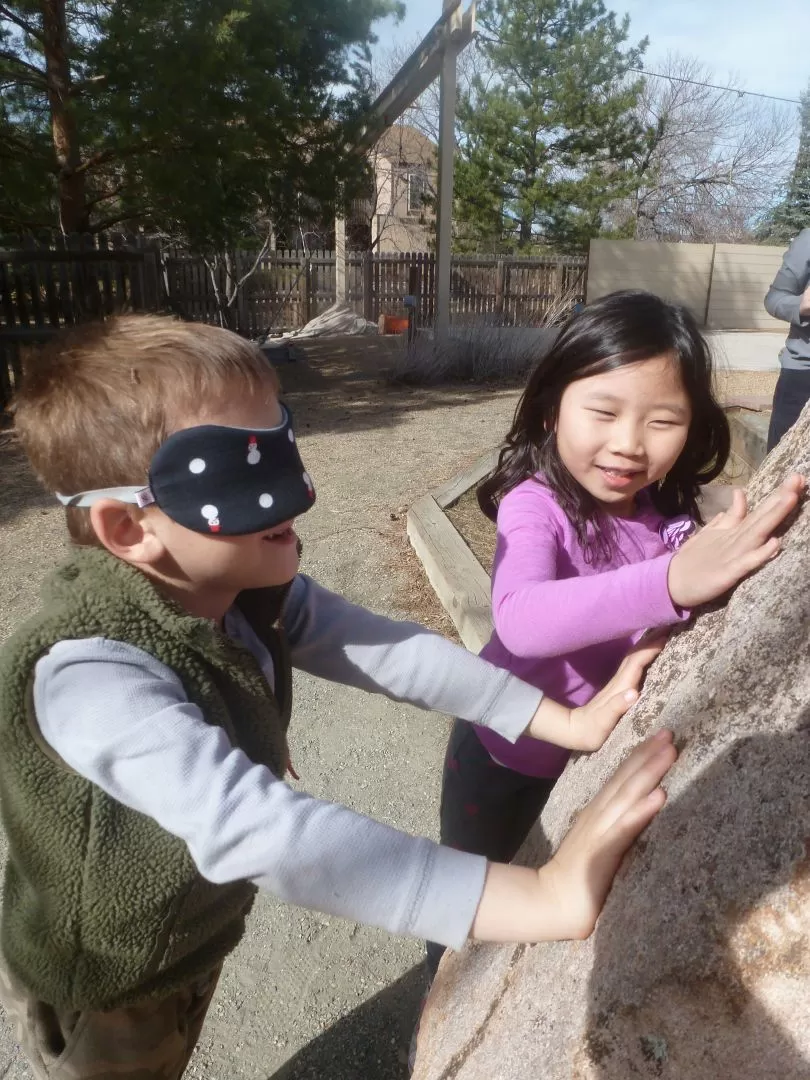I believe students are more likely to get excited about learning when it is relevant to them and connected to their interests. Over the last few weeks, the Kindergarteners have been investigating the five senses. They use their five senses everyday to investigate the world around them, but they don’t always stop to think about how they help us learn about the world.
We began our unit of inquiry studying the sense of sight. The first test we did was to blindfold a friend and help to guide them around the outdoors. Students had to trust their partners. When they all had a turn to be blindfolded, I asked the Kindergartners open-ended questions like, ”How did this experiment of not seeing, affect the way you used your other senses? Did you feel nervous or comfortable? Why?” These kinds of questions begin conversations, affirm ideas, and reveal their thinking. My students had a greater appreciation for their sense of sight and immediately suggested that this is what it feels like to be blind. I carefully explained to them that people who are blind are taught different skill sets than we are. I introduced the Kindergarteners to the Braille alphabet and they got to “read” a Braille menu and touch their names in Braille. Then we researched a few blind people who have done some amazing things like climb Mount Everest, race cars, and become famous musicians and artists. The Kindergartners decided that you can really accomplish anything if you work hard at it.


To conclude our inquiry into the sense of sight, we investigated the parts of the eye. My students loved observing their own eyes in small mirrors. They were fascinated with the pupil and how it shrinks drastically when we turn on the bright lights. We learned how light rays enter the eye and how the iris works like shutter in a camera. The Kindergartners were fascinated with optical illusions. They could hardly believe their eyes!
Following my students’ interests and applying their knowledge to real life, keeps their attention and excitement for learning!!!



